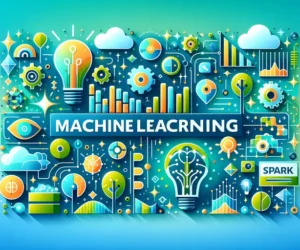
The Future of Machine Learning: Rising Demand and Opportunities

- Companies Will Need to Invest in Training Their Workforce in Machine Learning to Meet Future Demand
- Machine Learning Algorithms Will Become More Advanced
- Machine Learning Will Be Used in a Wide Range of Industries, Including Healthcare, Finance, and Transportation
- Increased Need for Machine Learning Engineers and Data Scientists
- Machine Learning Will Help Automate Repetitive Tasks
- The Adoption of Machine Learning Will Lead to the Development of Innovative Products and Services
- Machine Learning Will Play a Crucial Role in Improving Cybersecurity
- Machine Learning Models Will Become More Interpretable
- The Use of Machine Learning Will Lead to Personalized Experiences
- Advancements in Natural Language Processing and Computer Vision
- Conclusion
Companies Will Need to Invest in Training Their Workforce in Machine Learning to Meet Future Demand
As the demand for machine learning continues to grow, companies must invest in training their workforce to stay competitive. By equipping employees with machine learning skills, businesses can harness the full potential of this transformative technology. Training programs can range from basic machine learning concepts to advanced techniques, ensuring that employees at all levels are proficient.
The benefits of training the workforce in machine learning are manifold. It enables employees to develop innovative solutions to complex problems, enhances decision-making processes, and improves overall efficiency. Moreover, a well-trained workforce can quickly adapt to new technologies and methodologies, fostering a culture of continuous improvement and innovation.
Investing in workforce training also helps retain talent and attract new hires. Employees are more likely to stay with a company that invests in their professional development, reducing turnover rates. Additionally, companies known for their commitment to employee training are more attractive to job seekers, giving them a competitive edge in the talent market.
Machine Learning Algorithms Will Become More Advanced
The future of machine learning will see algorithms becoming increasingly sophisticated. These advancements will lead to better predictions, more accurate insights, and enhanced decision-making capabilities. As algorithms evolve, they will be able to process larger datasets and uncover patterns that were previously undetectable.
One significant development will be the integration of deep learning techniques. Deep learning models, such as convolutional neural networks (CNNs) and recurrent neural networks (RNNs), will enable more complex data analysis and interpretation. These models excel in areas like image recognition, natural language processing, and predictive analytics, pushing the boundaries of what machine learning can achieve.
Furthermore, the improvement in algorithm efficiency will reduce computational costs and processing times. This will make machine learning more accessible and practical for a wider range of applications. As a result, businesses and industries will be able to leverage advanced machine learning algorithms to gain a competitive edge and drive innovation.
Machine Learning Will Be Used in a Wide Range of Industries, Including Healthcare, Finance, and Transportation
Healthcare is one of the industries that will greatly benefit from machine learning. By analyzing vast amounts of medical data, machine learning models can assist in early disease detection, personalized treatment plans, and predictive analytics for patient outcomes. This will lead to improved patient care and more efficient healthcare delivery systems.
In the finance sector, machine learning will revolutionize fraud detection, risk management, and algorithmic trading. By identifying patterns and anomalies in financial data, machine learning models can predict market trends and detect fraudulent activities in real-time. This will enhance the security and efficiency of financial transactions and investments.
Transportation will also experience significant advancements due to machine learning. Autonomous vehicles, optimized logistics, and predictive maintenance are just a few examples of how machine learning will transform this industry. By leveraging machine learning algorithms, transportation companies can improve safety, reduce costs, and increase operational efficiency.
Increased Need for Machine Learning Engineers and Data Scientists
The growing demand for machine learning solutions will lead to a surge in demand for machine learning engineers and data scientists. These professionals are crucial for developing, implementing, and maintaining machine learning models and systems. Their expertise in data analysis, algorithm development, and programming will be essential for companies looking to stay competitive in the digital age.
To meet this demand, educational institutions and training programs must expand their offerings in machine learning and data science. This includes developing specialized courses, degree programs, and certification programs to equip students with the necessary skills. Additionally, companies can partner with educational institutions to provide internships and hands-on training opportunities.
Moreover, the role of machine learning engineers and data scientists will continue to evolve. They will need to stay updated with the latest advancements in technology and methodologies. Continuous learning and professional development will be crucial for these professionals to remain effective and contribute to their organizations' success.
Machine Learning Will Help Automate Repetitive Tasks
Machine learning has the potential to automate a wide range of repetitive tasks, freeing up human workers to focus on more complex and creative activities. By automating mundane tasks, businesses can increase efficiency, reduce operational costs, and minimize the risk of human error. This will lead to significant productivity gains across various industries.
One area where machine learning can have a profound impact is data processing and analysis. Machine learning algorithms can quickly process and analyze large datasets, identifying patterns and insights that would take humans much longer to uncover. This can streamline decision-making processes and enable faster, more informed decisions.
Additionally, machine learning can automate customer service tasks through the use of chatbots and virtual assistants. These tools can handle routine customer inquiries, provide personalized recommendations, and resolve common issues, improving the customer experience and reducing the workload on human customer service representatives.
The Adoption of Machine Learning Will Lead to the Development of Innovative Products and Services
The widespread adoption of machine learning will drive the development of innovative products and services. Companies that leverage machine learning will be able to create new solutions that were previously unimaginable, opening up new markets and opportunities. This innovation will be a key driver of growth and competitiveness in the coming years.
Opportunities for businesses will abound as they explore the potential of machine learning. From personalized marketing campaigns to predictive maintenance in manufacturing, machine learning will enable businesses to offer more targeted, efficient, and effective solutions. This will enhance customer satisfaction and loyalty, driving revenue growth.
However, the adoption of machine learning also comes with challenges and considerations. Companies must address issues related to data privacy, security, and ethical implications. Additionally, integrating machine learning into existing systems and workflows can be complex and resource-intensive. Businesses must carefully plan and execute their machine learning strategies to overcome these challenges.
Machine Learning Will Play a Crucial Role in Improving Cybersecurity
As cyber threats continue to evolve, machine learning will become an essential tool for enhancing cybersecurity and detecting anomalies. Machine learning algorithms can analyze vast amounts of data in real-time, identifying patterns and anomalies that may indicate a security breach. This proactive approach will enable organizations to detect and respond to threats more quickly and effectively.
Machine learning can also improve threat intelligence by analyzing data from various sources to identify emerging threats and vulnerabilities. By leveraging machine learning, cybersecurity teams can prioritize their efforts and focus on the most critical issues. This will enhance the overall security posture of organizations and reduce the risk of cyberattacks.
Moreover, machine learning can automate routine security tasks, such as monitoring network traffic and analyzing logs. This automation can free up security professionals to focus on more strategic activities, improving the efficiency and effectiveness of cybersecurity operations. As cyber threats become more sophisticated, machine learning will be a key component of robust cybersecurity strategies.
Machine Learning Models Will Become More Interpretable
As machine learning models become more complex, there is a growing need for model interpretability. Interpretable models allow stakeholders to understand how decisions are made, which is crucial for trust, transparency, and accountability. Techniques such as Local Interpretable Model-agnostic Explanations (LIME) and Shapley Additive Explanations (SHAP) can help provide insights into model behavior.
Model interpretability is particularly important in regulated industries such as healthcare and finance, where decisions can have significant consequences. By making models more interpretable, organizations can ensure compliance with regulations and build trust with stakeholders. Additionally, interpretability can help identify and mitigate biases in machine learning models, promoting fairness and ethical AI practices.
Furthermore, interpretable models can enhance decision-making by providing clear explanations for predictions and recommendations. This transparency can improve user confidence and adoption of machine learning solutions. As the demand for ethical and transparent AI grows, the development of interpretable models will be a key area of focus.
The Use of Machine Learning Will Lead to Personalized Experiences
Machine learning enables the creation of personalized experiences for consumers by analyzing individual preferences and behaviors. This personalization can enhance customer satisfaction and loyalty by providing tailored recommendations, products, and services. From personalized marketing campaigns to customized user interfaces, machine learning can transform the customer experience.
One example of personalization is recommendation systems used by streaming services, e-commerce platforms, and social media networks. These systems analyze user data to provide relevant content and product recommendations. By delivering personalized experiences, companies can increase engagement, retention, and sales.
Personalization also extends to areas such as healthcare, where machine learning can be used to develop personalized treatment plans based on individual patient data. This approach can improve patient outcomes and reduce healthcare costs. As machine learning continues to advance, the ability to deliver personalized experiences will become a key differentiator for businesses.
Advancements in Natural Language Processing and Computer Vision
Machine learning is driving significant advancements in natural language processing (NLP) and computer vision. NLP enables machines to understand and interpret human language, facilitating applications such as chatbots, sentiment analysis, and language translation. These advancements are transforming how businesses interact with customers and process information.
Computer vision involves the analysis of visual data, enabling applications such as image recognition, facial recognition, and autonomous vehicles. By leveraging machine learning algorithms, computer vision systems can identify objects, detect anomalies, and interpret visual information with high accuracy. These capabilities are revolutionizing industries such as retail, healthcare, and transportation.
The combination of NLP and computer vision is opening up new possibilities for AI applications. For example, AI-powered assistants can understand and respond to both spoken and visual inputs, providing a more seamless and intuitive user experience. As these technologies continue to evolve, they will drive further innovation and transformation across various sectors.
Conclusion
The future of machine learning holds immense potential and opportunities across various industries. As machine learning algorithms become more advanced, they will drive better predictions, insights, and decision-making. Companies must invest in training their workforce and adopting machine learning solutions to stay competitive and harness the full potential of this technology.
Machine learning will revolutionize industries such as healthcare, finance, and transportation, enabling automation, personalization, and innovation. It will also play a crucial role in enhancing cybersecurity and making machine learning models more interpretable. By staying updated with the latest developments and continuously improving their machine learning capabilities, businesses can thrive in the digital age.
By following these insights and practices, you can navigate the evolving landscape of machine learning and leverage its capabilities to drive growth and innovation.
If you want to read more articles similar to The Future of Machine Learning: Rising Demand and Opportunities, you can visit the Trends category.



You Must Read